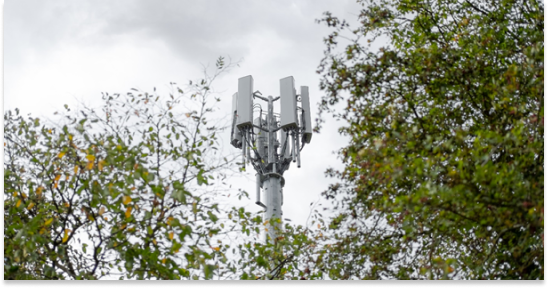Forget Tethering, There are More Effective Ways to Use 4G LTE on Your Computer, Laptop, or Tablet
In less than a decade, smartphones have revolutionized the ways and the reasons users today go online. The professional, practical, and social benefits of accessing the Internet from anywhere have caused a shift in consumer behavior away from prioritizing wireline (DSL, cable) access towards prioritizing wireless (mobile) access.
Mobile hotspots let travelers surf in commute on their own network
But, as fewer Millenials invest in wireline access for their first-time homes [1], the need to connect devices other than smartphones to the Internet persists. Creating a mobile hotspot by tethering these devices to a smartphone is probably the most popular way to turn a wireless service, like 4G, into Wi-Fi for other devices, but it is not the most efficient way. In fact, there are multiple ways to use your 4G wireless Internet service on your computer, laptop, e-reader, or tablet.
Born With It: Devices with Built-in SIM Ports
All new tablets, many e-readers, and some new laptops (excluding, conspicuously, MacBooks) have built-in SIM ports. These ports are located on the side of any tablet or compatible e-reader and usually under the battery slots of compatible laptops.
Users can purchase cellular data from any carrier and insert the SIM into their tablet, e-reader, or laptop (some devices are locked to one carrier). These data subscriptions, like phone subscriptions, are prepaid or paid monthly with a one-year or two-year contract.
Because 4G wireless Internet services no longer include unlimited data, purchasing a second plan for a secondary device is usually not a bad investment. There are, however, a few situations in which it is better to leave the SIM port empty:
- Your overall data use is low (less than 60GB per month). Carriers charge a line access fee per device so if, on all your devices, you use less than the maximum data allowance for one line (usually around 60GB), then it is more cost-effective not to purchase a second line.
- You want to share. Guests appreciate having access to Wi-Fi. If there is a high volume of devices (either yours or your guests) in your home, a hotspot is more convenient and, likely, more cost-effective.
- You rarely access the Internet on secondary devices or you usually use them in places with public Wi-Fi (the office, libraries, coffee shops, hotels).
If your device does not have a SIM card port, or if you choose (for one of the reasons above) to leave the SIM port empty, here are the other options for enjoying mobile Internet on your devices:
- Android, iOS, Blackberry, and Windows smartphones all contain Wi-Fi chips that support tethering. Depending on your plan, you may have to pay an additional fee to use tethering on your phone. A smartphone is, overall, an inefficient hotspot because its other functions (receiving calls and messages, etc.) reduce Wi-Fi speeds.
- Mobile hotspots are dedicated devices that supply portable Wi-Fi to other devices. They connect directly to wireless networks and provide faster and more reliable service than tethering to a smartphone. A substantial number of providers, including the four major national carriers, offer mobile hotspots that connect to a particular mobile network.
- USB modems (also known as USB dongles or air cards) are dedicated devices that supply portable Internet to one other device. USB dongles provide a faster connection than mobile hotspots and are also smaller and, therefore, more portable.
Call us to find the best internet package for your onlineg needs 1-866-439-6630.



